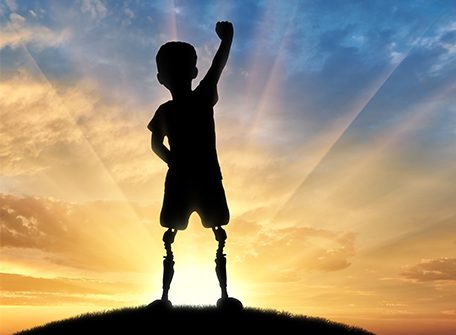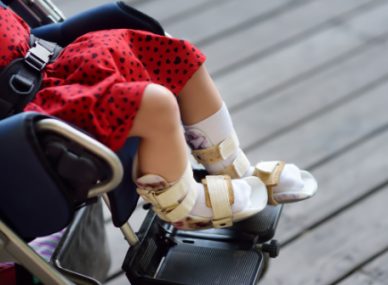In the last few decades, the world of prosthetics has come a long way. Prosthetic technology has progressed so quickly that it can now restore people’s extraordinary capabilities. Prosthetics are now available in a variety of sizes. Because of the wide range of possibilities, practically anyone can benefit from using it.
What Are the Advantages of Using Prosthetics for Children?
Prosthetics for kids help them with limb discrepancies improve dramatically.
Take a look at the following list of advantages that children have reaped from using prosthetics:
- Mobility
- Full independence
- Increased comfort
- Inclusion
- High Self-esteem
Enhanced Mobility
The first and most evident advantage of prosthetics is their versatility. Lower extremity prosthetics allow a youngster to move around in much the same way that a real limb would.
Even individuals who need upper extremity prostheses will benefit from the device’s greater mobility. This won’t be the same as being able to stroll from one room to the next, but it will still give them access to regions they wouldn’t otherwise have access to.
Prosthetics allow the wearer to move more freely during the day. This skill leads to the second advantage of prostheses for children: independence.
Independence
We may not like the idea of our children being entirely self-sufficient, but it is critical for them to be able to do so. This is beneficial to their growth into fully functional adults. It’s also good for their emotional health.
Children do not wish to be completely reliant on their parents for the rest of their lives. They want to accomplish things on their own. It teaches kids valuable lessons and prepares them for future success.
Enhanced Comfort
The movements that prosthetics allow and facilitate have greatly improved. They have, however, made improvements to the device’s overall feel.
When we don’t have the requisite physical capabilities to conduct simple activities, they can become painful. Kids can experience these casual movements in a more natural way with prosthetics, which can be much more comfortable for them.
Our daily routines consist of a sequence of motions that we repeat over and over again. Assisting a child in finding a more fluid, pleasant manner to accomplish these motions will improve their overall quality of life.
Inclusion
When we’re young, our social circles are equally as essential to us as our parents. These bonds can last a long time and teach us things we wouldn’t have learned otherwise. Socialization is vital, and it may be more difficult if a child is unable to participate in activities with other children his or her age.
Conditions that necessitate the use of prosthetics might make a youngster feel isolated and out of place among their peers.
Prosthetics enable children to participate in the games that their peers are playing on the playground. This allows kids to get more exercise, but maybe more importantly, it allows them to interact more with their classmates.
Increased Self-Esteem
A child’s weak self-image can put them in a difficult situation. They have a higher chance of being withdrawn. We’ve already talked about how important it is to be able to accomplish things alone and feel connected to people your age. And at the center of those considerations is the concept of self-image.
A child’s capacity to participate and complete tasks on their own will boost their self-esteem. This has advantages in a variety of aspects of their lives.
For example, if a child feels good about himself, they may be more eager to attempt new things. This may take them down routes they would not have discovered otherwise.
What Factors Should You Keep In Mind While Choosing Prosthetics?
You must check the following things when choosing the prosthetic-
- The level of amputation
- The specific goals and needs
- The situation of the remaining limb
- The activity level of the children
Where To Find The Customized Prosthetics And Orthotics?
We at Hope AMC work with certified professionals such as doctors, physical therapists, orthotists, and prosthetists. They assess the state of the child, then design, custom fit, and construct all forms of knee ankle foot orthosis and prosthetics while working as a team to address the unique needs of each child.
Our Range of Prosthetics-
- Prosthetic Arm and Prosthetic Hand
- Pediatric Prosthetics
- Prosthetic Leg and Prosthetic Foot
Now Have A Look At Our Wide Range of Pediatric Orthotics
- Pediatric knee ankle foot orthosis.
- Pediatric thoraco lumbar sacral orthosis.
- Pediatric ankle foot orthosis.
- Pediatric supra-malleolar orthosis.
- Adjustable hip abduction orthosis.
- UBC foot orthosis.
- Tuning ankle foot orthosis.
- Sitting/walking/sitting hip orthosis.
- Pediatric WalkAide system.
- Cranial molding helmet.
- Foam and plastic hip abduction orthosis.
- Wheaton brace.
- Denis Browne bar.
- Pavlov harness.
- Pediatric supra-malleolar orthosis.
Conclusion
It will take some time for your children to get used to life with a prosthetic or ankle-foot orthosis. Talk to our expert orthotists and prosthetists to get the best advice.
Click here to make an appointment.



